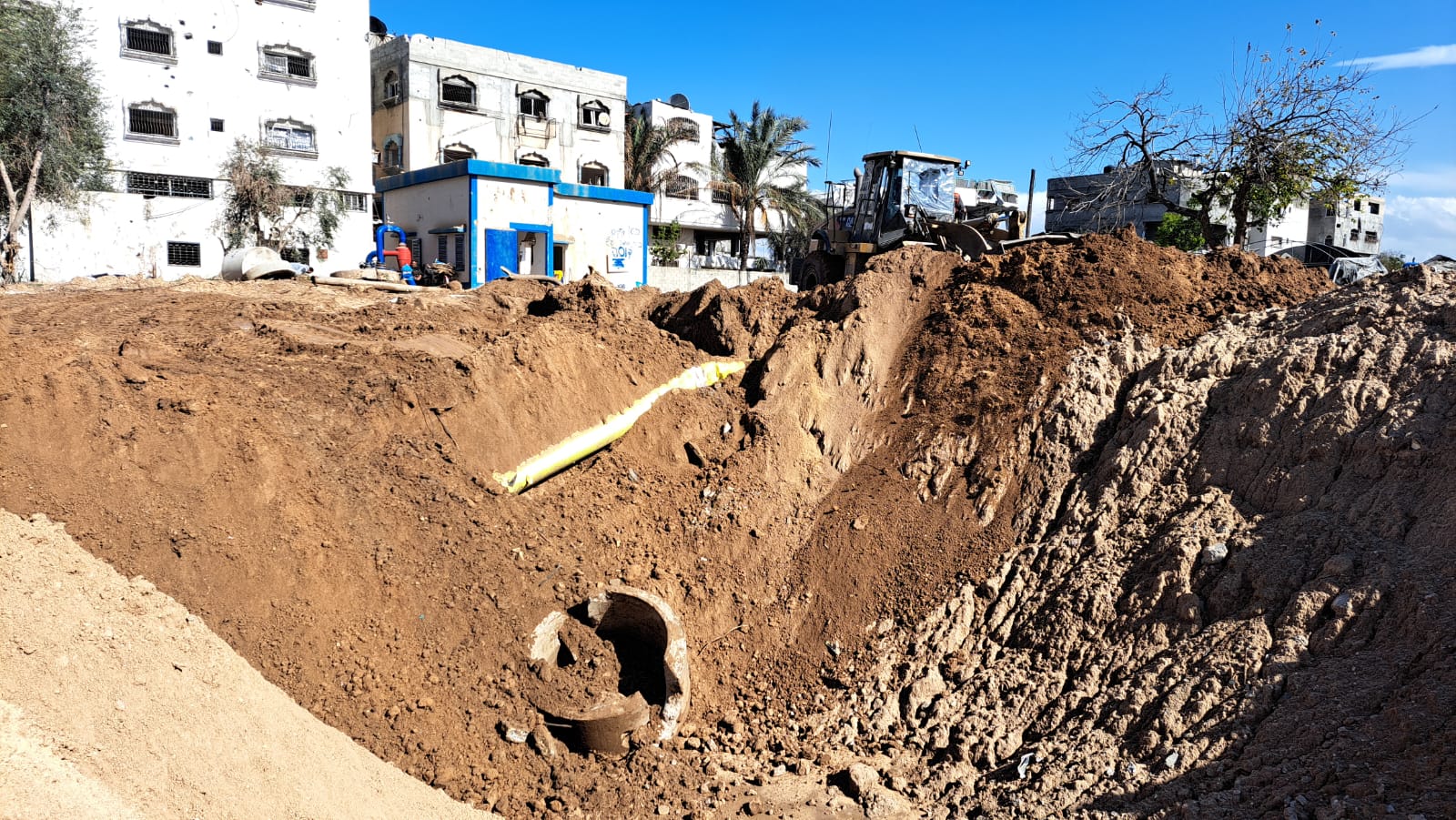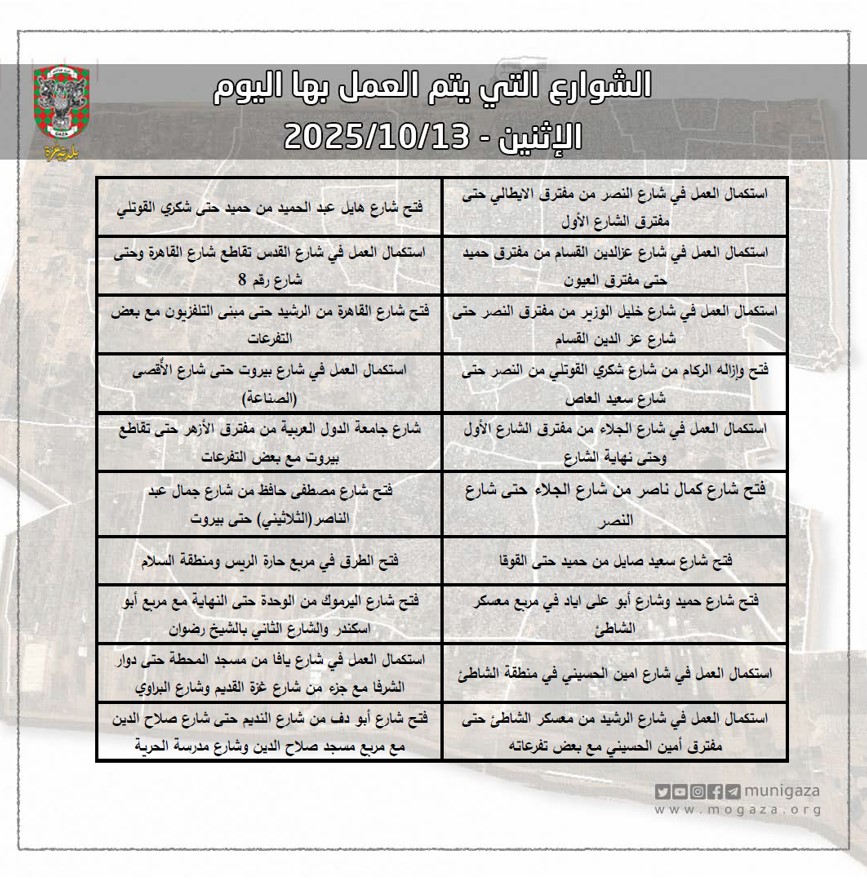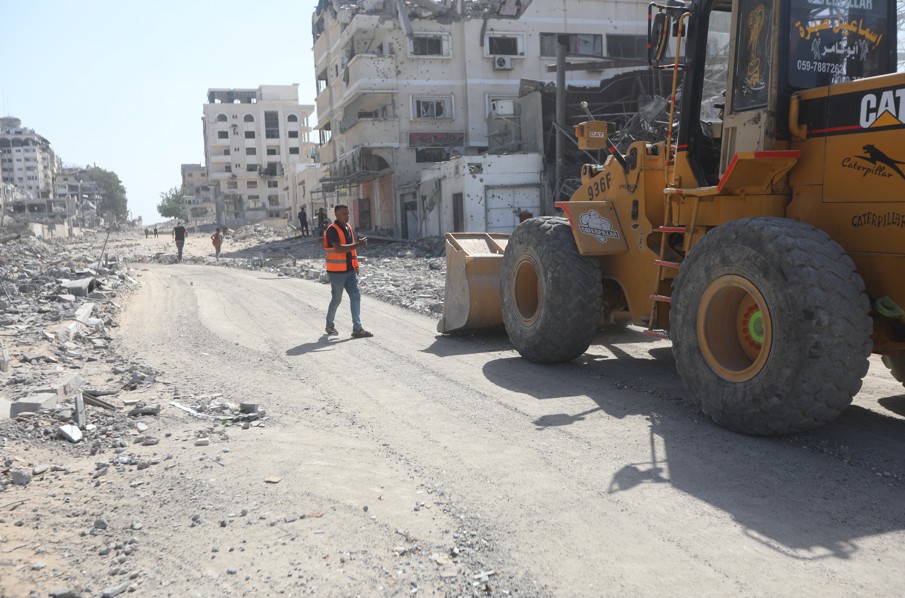
English bellow
إعلام البلدية:
أكدت بلدية غزة أن كمية المياه المتوفرة حالياً لا تتجاوز 12% من إجمالي الكمية التي كانت متوفرة قبل بدء حرب الإبادة، وذلك نتيجة تدمير الاحتلال نحو 75% من الآبار ومحطة التحلية في شمال المدينة، بالإضافة إلى عدم توفر الوقود بشكل كافٍ ومستقر، وتذبذب الكميات الواردة عبر خط مياه "ميكروت"، فضلاً عن عدم القدرة المستمرة على الوصول إلى محابس توزيع المياه، مما أدى إلى عجز كبير في كميات المياه وتفاقم أزمة العطش في المدينة، وعدم وصول المياه بشكل تام إلى مناطق واسعة منها.
وأوضحت البلدية أن الكمية المتوفرة قبل الحرب كانت تقدر بنحو 120 ألف كوب من المياه يومياً، إلا أنها تراجعت مع بدء حرب الإبادة وتدمير مرافق المياه إلى نحو 20 ألف كوب فقط، وهي كمية ضئيلة جداً مقارنة بالاحتياجات الكبيرة، لاسيما مع ارتفاع درجات الحرارة وزيادة عدد السكان نتيجة نزوح مئات الآلاف من المواطنين من محافظة شمال القطاع وأحياء شرق المدينة إلى مناطق غرب غزة.
وأضافت البلدية أن الكمية التي كانت ترد من خط "ميكروت" قبل الحرب كانت تغطي نحو 20% من احتياجات المدينة، فيما كان الباقي يتم توفيره عبر إنتاج الآبار المحلية ومحطة التحلية. أما بعد بدء الحرب، فقد أصبحت الكمية الواردة من "ميكروت" تشكل أكثر من 75% من المياه المتوفرة، بسبب تدمير معظم الآبار ومرافق المياه، إلى جانب نقص الوقود وعدم استقراره.
وبيّنت أن تذبذب الكميات التي تصل عبر خط "ميكروت" وعدم استقرارها في بعض الأوقات، نتيجة توغل الاحتلال في شرق المدينة وتوقف الضخ في بعض الأيام، يؤدي إلى أزمة عطش كبيرة، خاصة أن الخط يمثل حالياً المصدر الرئيس للمياه في غزة.
كما أشارت إلى أن أبرز التحديات التي تواجه قطاع المياه في المدينة تتمثل في تدمير معظم آبار المياه والشبكات، ووقوع بعض المحابس والآبار العاملة في مناطق خطرة يصعب الوصول إليها، بالإضافة إلى غياب مصادر طاقة مستقرة لتشغيل ما تبقى من آبار المياه.
وتطالب بلدية غزة المنظمات الدولية بضرورة الإسراع في تقديم المساعدة لحل أزمة العطش التي تعاني منها المدينة، والتخفيف من معاناة السكان في الحصول على المياه، وتوفير الإمكانيات والمعدات اللازمة لتحسين مصادر المياه وزيادة كمياتها، مع الإشارة إلى ارتفاع عدد السكان بأكثر من 500 ألف نسمة نتيجة نزوح واسع النطاق.
.
Key Challenges: 75% of Wells and the Desalination Plant Destroyed, and Fuel Shortages
Gaza Municipality: Current Water Supply Equals Only 12% of Pre-Genocide Levels
Gaza Municipality confirmed that the current volume of water available is no more than 12% of the total supply that existed prior to the genocide. This sharp decline is the result of the destruction of approximately 75% of the city’s wells and its desalination plant in northern Gaza, in addition to severe fuel shortages and instability, fluctuations in the quantities received from the Mekorot water line, and the inability to consistently access water distribution valves. These factors have caused a major deficit in water supply, exacerbating the thirst crisis across the city and leaving many neighborhoods completely without water.
The Municipality explained that before the war, the available supply was around 120,000 cubic meters of water per day. With the onset of the genocide and the destruction of water facilities, however, this amount dropped to just 20,000 cubic meters per day a critically insufficient level compared to the city’s immense needs, particularly amid soaring temperatures and a significant rise in population due to the displacement of hundreds of thousands of residents from northern Gaza and eastern neighborhoods into western areas of the city.
The Municipality added that prior to the genocide, the Mekorot water line covered about 20% of the city’s needs, while the remaining supply came from local wells and the desalination plant. After the start of the war, however, the Mekorot line has come to account for more than 75% of the available supply, due to the destruction of most wells and water facilities, coupled with the lack of stable and sufficient fuel.
It further noted that fluctuations and interruptions in the Mekorot water supply caused at times by Israeli incursions in eastern Gaza and the halting of pumping on certain days have created a severe water crisis, particularly since the Mekorot line now represents the primary source of water for Gaza.
The Municipality emphasized that the most pressing challenges facing the water sector include the destruction of most wells and networks, the location of some functioning wells and valves in high-risk areas that are difficult to access, and the absence of reliable energy sources to operate the remaining wells.
Gaza Municipality urgently calls on international organizations to provide immediate assistance to address the city’s water crisis, alleviate civilian suffering in accessing water, and supply the necessary resources and equipment to improve water sources and increase available quantities. It also highlighted that the city’s population has grown by more than 500,000 people as a result of mass displacement

